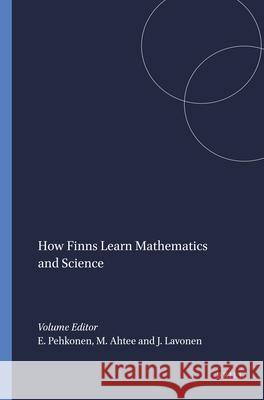How Finns Learn Mathematics and Science » książka
How Finns Learn Mathematics and Science
ISBN-13: 9789087902421 / Angielski / Miękka / 2007 / 288 str.
The Finnish students success in the first PISA 2000 evaluation was a surprise to most of the Finns, and even people working in teacher education and educational administration had difficulties to believe that this situation would continue. Finlands second success in the next PISA 2003 comparison has been very pleasing for teachers and teacher educators, and for education policymakers. The good results on the second time waked us to think seriously on possible reasons for the success. Several international journalists and expert delegations from different countries have asked these reasons while visiting in Finland. Since we had no commonly acceptable explanation to students success, we decided at the University of Helsinki to put together a book "How Finns Learn Mathematics and Science?", in order to give a commonly acceptable explanation to our students success in the international PISA evaluations. The book tries to explain the Finnish teacher education and school system as well as Finnish childrens learning environment at the level of the comprehensive school, and thus give explanations for the Finnish PISA success. The book is a joint enterprise of Finnish teacher educators. The explanations for success given by altogether 40 authors can be classified into three groups: Teacher and teacher education, school and curriculum, and other factors, like the use of ICT and a developmental project LUMA. The main result is that there is not one clear explanation, although research-based teacher education seems to have some influence. But the true explanation may be a combination of several factors.











